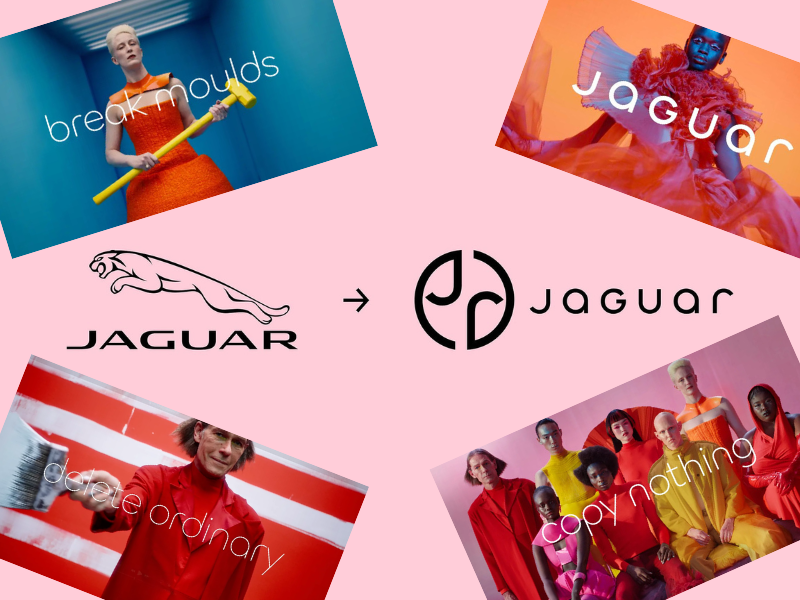
Hey Friends! I hope you’ve had an awesome week. We’re all buzzing over here about the announcement of Tim Scarfe as our new SVP and West Coast Lead. After years of unresolved bickering with Becky over which of us would bite the bullet and move to the Bay Area, we identified the PERFECT candidate. Tim is awesome, and in just a few days he’s already made a big impact. Did you see the news? Check it out here.
Shameless Plug: Will you be in/around SF during RSA (4/28-30)? If so, drop us a line. We’ll be hosting a media breakfast and would LOVE to have you. Or…maybe just a drink and an intro to Tim, Meghan, and Matt?!?
This week we’re highlighting a few stories that resonated with us. Our first two stories came out of SXSW: one on how a handful of brands made lemons out of lemonade, and another revealing some key tech and PR insights from Austin. Lastly, we take a peek at how the new tariffs launched by the Trump Administration will likely impact marketers. Hint hint…they will…significantly.
Stay tuned to our socials and obviously our next newsletter for all the fun we’ll be having in Puerto Rico. 35 SourceCoders on an island in the Caribbean…what could possibly go wrong?
That’s it from us!
Greg & Becky
Making a comeback: How consumer backlash can strengthen brands

TL;DR: In a panel at SXSW 2025, marketing leaders from Jaguar Land Rover, Panera Bread, Vuori, and Bobbie discussed how they pivoted brand hiccups and missteps from consumer loyalty risks to positive organizational change.
Takeaway: Initial negative feedback from audiences isn’t a death knell. You may remember Jaguar’s modern identity overhaul last year which, interestingly, didn’t even feature one of their cars. While people spent weeks ridiculing and criticizing the brand, Jaguar rode the public discussion to build momentum for their new model launch the following month. Suddenly, everyone was paying attention to the new car – potentially more than they otherwise would have with a standard release strategy. By strategically realigning brand narratives, most brands can turn the negative public perception around.
Consider:
- Backlash hurts, but the feedback at its core can be genuinely helpful. Work through consumers’ vitriol and upset to get to the real concerns behind it, then take those concerns seriously to help your brand grow. .
- Consumer backlash cycles are shorter than you think. Strategize and plan for how your brand is going to emerge even stronger on the other side. What can you do with this extra attention and how can you use it to your advantage?
⚡️ Fueling Growth Through Integrated Marketing ⚡️
Struggling to answer that last bullet point? Integrated Marketing can help!
To start, get curious about consumers; this will help you reverse engineer what data solutions you’ll need.
For example, at SXSW, Samsung’s CMO noted, “I don’t just want to know that you’re looking for your next TV — I want to know that you’re looking for a TV because you like watching sports, and I want to know that you are the most passionate about the New York Giants so that I can start showing you content about how the Samsung TV is their best Giants experience.”
This is the power of Integrated Marketing: using data to fuel strategy, content, and customer connection. The right checkpoints and analytics create a feedback loop that drives smarter, more personalized outreach.
Embrace big data: Tech & PR takeaways from SXSW 2025
TL;DR: Data and AI were on everyone’s minds at SXSW. Leaders from Samsung, Bluesky, and The New York Times presented on how their companies are strategically integrating big data tools to create natural benefits for consumers.
Takeaway: Each leader emphasizes the value of a nuanced approach to big data and emerging tech. Samsung talked about how the big data team sits within the corporate marketing department and helps marketers better understand customer intentions and personas. Bluesky CEO Jay Graber covered the importance of giving humans control over their own data and how they can use it to curate their own feeds. To overcome growing public hesitancy around big data (and also, an industry oversaturation of useless implementations of big data), companies should embrace innovation with a human touch..
Consider:
- Big data is often just a big buzzword. What do big data tools really look like for your brand? Don’t hide behind hyperbole and the jargon-du-jour – tell it like it is. Use plain language to explain the benefits of big data tools so consumers understand how these tools actually improve their experience with your brand.
- Take a note from Bluesky or Samsung and use big data to humanize your brand experience. How can powerful data tools help you get to the root of what consumers want, without sidling them with tools and apps they don’t want?
Adjusting to new changes: Evolving U.S. tariffs are impacting marketing budgets
TL;DR: The U.S. is implementing varying tariffs on goods from China, Mexico, and Canada, with additional tariffs proposed for the EU. While the situation is still evolving, businesses worldwide are already accounting for additional costs – a move that may negatively impact marketing budgets.
Takeaway: If you’ve been in the industry long enough, you probably know that when times are tough for businesses, marketing is the first to feel the impact. And it kind of makes sense, right? Marketing is, generally, a scalable expense and often considered less vital (debatable) than departments like legal or finance. Under acute pressures like tariffs, companies may question whether they should be openly promoting their products, when they don’t know how much production costs could rise. The expert consensus is that marketers should stay up-to-date with the governmental changes and expect H2 budgets to be hit with cuts… so, now might be a good time to start getting creative (and frugal).
Consider:
- Are you subscribed to and regularly checking relevant news outlets? With so much changing every day, one of the best ways to stay ahead of the game is to stay informed. This is especially important if you’re a U.S.-based business who works with distributors and production companies worldwide, or vice versa.
- It’s never a bad idea to make an emergency plan. What would you do if your marketing budget was cut in half tomorrow? Identify all the possible scenarios that could happen if budget cuts occur, so you won’t be floundering if it happens.
Like what you’re reading? To get our newsletter to your inbox sign up here!





